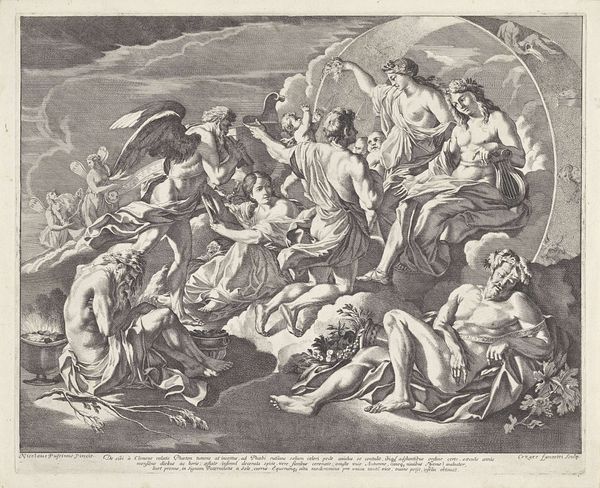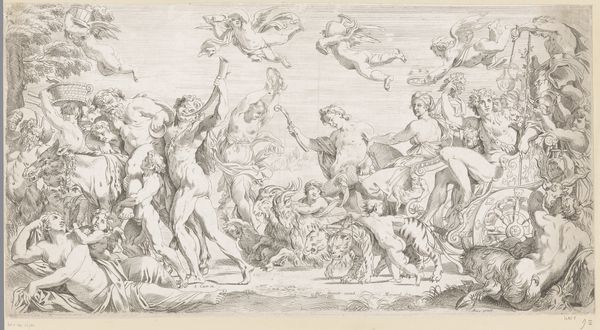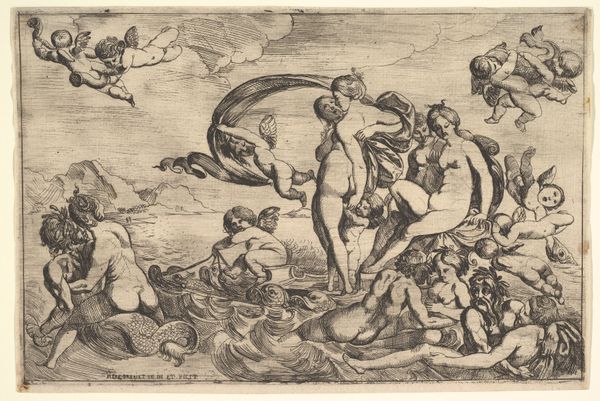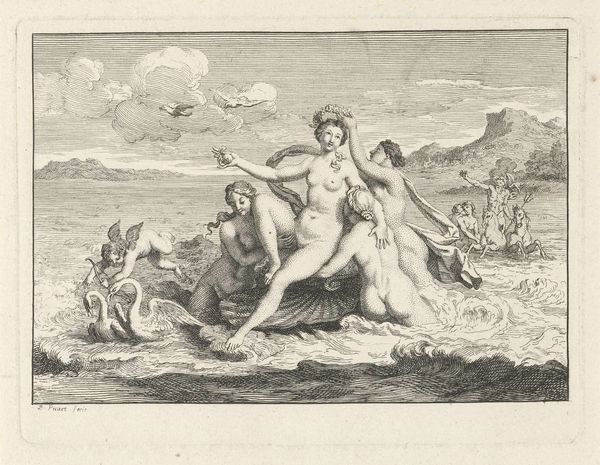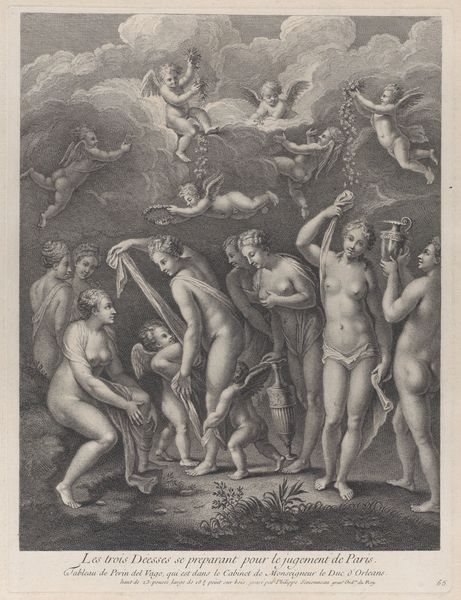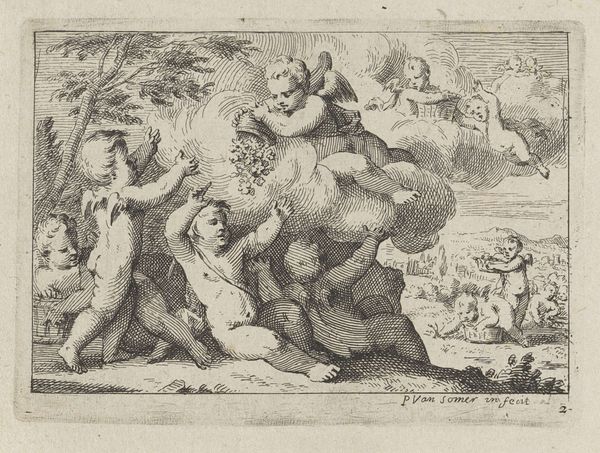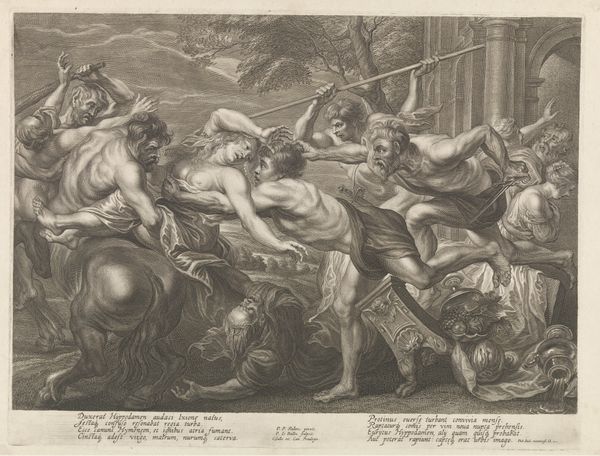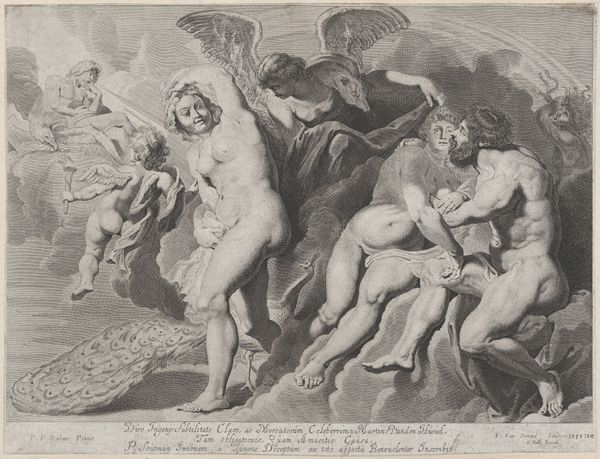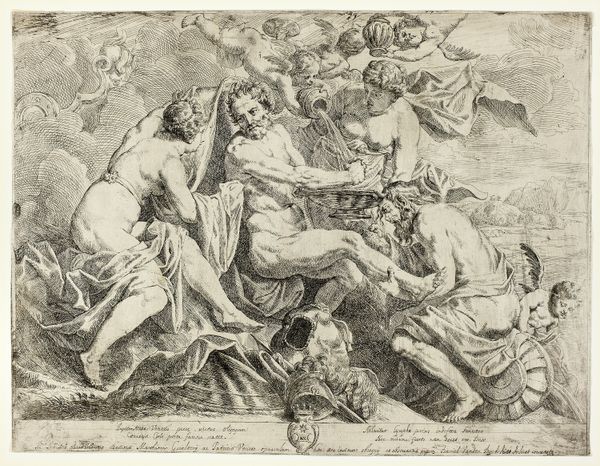
engraving
#
allegory
#
baroque
#
figuration
#
nude
#
engraving
Dimensions: height 403 mm, width 529 mm
Copyright: Rijks Museum: Open Domain
"Venus op zee" was made by Pieter de Jode II, a printmaker working in Antwerp in the 17th century. Here, the goddess Venus rises from the sea accompanied by sea creatures and putti, her body idealized and offered for the viewer's gaze. Prints like this played a crucial role in the institutional history of art, circulating imagery across Europe. Jode's print reproduces a painting by Peter Paul Rubens, who ran a large and successful workshop in Antwerp. The Rubens workshop was a highly commercial enterprise; it relied on printmakers to disseminate its paintings, and thus to attract new patrons. It’s worth asking how such images functioned in a deeply religious, yet commercially driven society like 17th-century Flanders. Rubens and Jode were canny operators within the established order, flattering their patrons by deploying classical imagery for a Counter-Reformation agenda. Art historians consult a range of archival material in their efforts to understand the social life of images such as this. We look at inventories, letters, and business records to better understand how these prints were commissioned, by whom, and for what purposes.
Comments
No comments
Be the first to comment and join the conversation on the ultimate creative platform.

